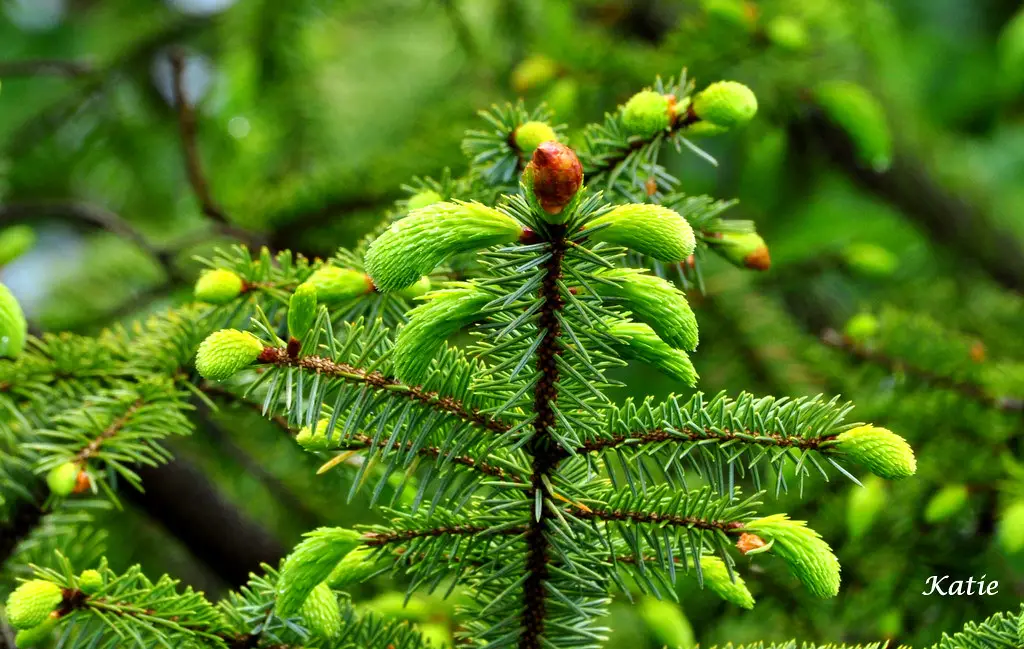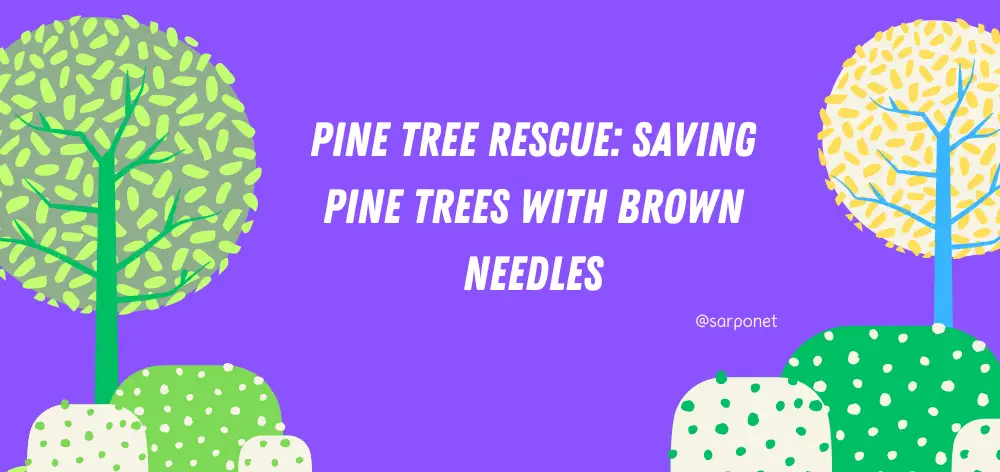Basswood Tree Identification: Uncover the Secrets of Identifying this Beautiful Tree
The key to identifying a Basswood tree is to look for large heart-shaped leaves with coarsely serrated margins and pointed tips, as well as silvery-gray bark on young trees that becomes furrowed, rough, and dark gray. Basswood, also known as American Linden, is a native tree typically found near streams, lakes, or moist areas at the bottom of slopes.
It is a popular shade tree and an important timber tree in the Great Lakes States. Basswood can be distinguished from other trees by its unique leaf shape and bark characteristics. By observing these features, you can confidently identify a Basswood tree in Austin, Texas, or anywhere else it grows in the United States.
Introduction To Basswood Trees
Basswood trees, also known as American Linden trees, can be identified by their large heart-shaped leaves with serrated margins and pointed tips. These trees also have silvery-gray bark when they are young, which becomes furrowed, rough, and dark gray as they mature.
Overview Of Basswood Trees’ Characteristics:
- The Basswood tree, also known as the American Linden tree, is native to North America.
- These trees are known for their large size and can grow up to 80 feet tall with a spread of 30 to 50 feet.
- Basswood trees have a dense, oval-rounded canopy that provides ample shade.
- The bark of a Basswood tree is grayish-brown and smooth when young, but develops shallow furrows and ridges as it matures.
- One of the distinctive features of Basswood trees is their heart-shaped leaves that have serrated edges.
- The flowers of these trees are small, fragrant, and pale yellow, appearing in clusters in late spring or early summer.
- Basswood trees also produce small, round, nut-like fruits that are an important food source for wildlife.
- These trees are adaptable to a variety of soil types and can tolerate both full sun and partial shade.
- Basswood trees are often cultivated in landscaping due to their attractive foliage, shade-providing canopy, and the aesthetic value they add to outdoor spaces.
- In the timber industry, Basswood is highly valued for its lightweight, straight-grained wood, which is used to make furniture, carvings, musical instruments, and various other wood products.
Importance Of Basswood Trees In Landscaping And Timber Industry:
- Basswood trees are highly sought-after in landscaping due to their aesthetic appeal. They add a touch of elegance and beauty to gardens, parks, and streetscapes.
- The dense foliage and large size of Basswood trees make them perfect for providing shade in outdoor spaces, creating a cool and comfortable environment during hot summers.
- These trees are also valued for their ability to attract pollinators like bees and butterflies, making them beneficial to ecosystem health and biodiversity.
- In the timber industry, Basswood is a valuable wood material. Its lightweight nature, fine texture, and ease of carving make it a preferred choice for furniture manufacturers, woodworkers, and artists.
- Basswood wood is also used in the production of musical instruments such as guitars and pianos, where its excellent resonance and tonal qualities contribute to the overall sound quality.
- The straight grain and uniform texture of Basswood wood makes it ideal for creating intricate wood carvings, sculptures, and decorative items.
- Due to its versatility and workability, Basswood is widely used in the manufacturing of plywood, veneers, and various wood products.
Basswood trees, with their striking characteristics and multiple uses, play a crucial role in both landscaping and the timber industry. These trees not only enhance the beauty of outdoor spaces but also provide valuable wood resources for various industries.
Identifying Basswood Trees
American basswood trees can be identified by their large heart-shaped leaves with serrated margins and pointed tips. Another distinguishing feature is their silvery-gray bark on young trees that becomes furrowed, rough, and dark gray as they mature.
Visual Cues To Identify Basswood Trees:
- Basswood trees are large deciduous trees that can reach heights of up to 80 feet.
- They have a rounded crown and a straight trunk.
- The leaves of basswood trees are green and heart-shaped, measuring around 5-8 inches in length.
- The bark of basswood trees is smooth and grayish-brown, with shallow ridges and furrows.
- Basswood tree twigs are slender and brownish in color, with distinctive buds at the tip.
- Basswood trees produce small, fragrant, yellowish flowers in late spring or early summer.
- The seeds of basswood trees are small and brown, enclosed in a papery capsule.
Examining The Leaves Of Basswood Trees:
- Basswood tree leaves are simple and alternate in arrangement.
- They have a distinctive heart shape and are finely toothed along the edges.
- The leaves are smooth and dark green on the upper surface, while the lower surface is paler.
- The veins of basswood tree leaves are prominent and radiate from the base.
- When crushed, the leaves of basswood trees emit a pleasant, sweet aroma.
Analyzing The Bark Of Basswood Trees:
- The bark of basswood trees is smooth and can appear somewhat shiny.
- It is grayish-brown in color, and as the tree ages, it develops shallow ridges and furrows.
- The bark texture is relatively uniform and lacks any distinctive patterns or markings.
- Younger basswood trees may have smoother bark, while older trees show more pronounced ridges.
Notable Features Of Basswood Tree Twigs:
- Basswood tree twigs are slender and slightly reddish-brown in color.
- They have a smooth texture and are relatively flexible.
- The twigs often have distinctive buds at the tip, which are usually pale in color and arranged in pairs.
- The buds gradually develop into new leaves or flowers.
- Basswood tree twigs do not have any thorns or spines.
Different Types Of Basswood Trees
Basswood trees can be identified by their large heart-shaped leaves with serrated margins and silvery-gray bark on young trees that becomes dark gray and rough with age. They are commonly found near streams and lakes or in moist areas.
Tilia Platyphyllos: Features And Characteristics
- Also known as the Broad-Leaved Lime or Large-Leaved Lime.
- Can reach heights of up to 130 feet.
- Has large, heart-shaped leaves with toothed edges.
- Yellow-green flowers appear in clusters during late spring and early summer.
- The bark is grayish-brown and furrowed.
Tilia Cordata: Distinctive Traits And Identification
- Commonly referred to as the Little-Leaf Linden or Small-Leaved Lime.
- Typically, it grows to heights between 60 and 80 feet.
- Leaves are small, heart-shaped, and have finely serrated edges.
- Fragrant yellow flowers bloom in clusters from late spring to early summer.
- The bark is light gray and smooth with shallow grooves.
Silver Linden (Tilia × Europaea): Understanding Its Unique Qualities
- A hybrid variety resulting from a cross between Tilia dasystyla and Tilia tomentosa.
- Can reach heights up to 100 feet.
- Leaves are heart-shaped with serrated edges.
- Pale yellow flowers bloom in clusters from late spring to early summer.
- The bark is grayish-brown and develops deep furrows over time.
Tilia Henryana: Recognizing The Distinguishing Characteristics
- Also known as Henry’s Lime or China Basswood.
- Grows to heights between 40 and 60 feet.
- Leaves are ovate to elliptic with serrated edges.
- Fragrant, yellow flowers bloom in clusters during the summer.
- The bark is grayish-brown and smooth in younger trees, becoming scaly with age.
Comparing Basswood And Other Tree Varieties
American Basswood, also known as Linden, can be identified by its large heart-shaped leaves with serrated margins and pointed tips. It also has silvery-gray bark on young trees that becomes dark gray and rough with age. This makes it a distinctive tree variety compared to others.
Comparing Basswood And Tulip Poplar
When it comes to comparing basswood and tulip poplar trees, there are several distinguishing features to consider:
- Leaves: Basswood leaves are heart-shaped, while tulip poplar leaves are lobed with a unique tulip-like shape.
- Bark: The bark of basswood trees has ridges and furrows, while tulip poplars have grayish-brown bark with distinctive furrows that create a diamond pattern.
- Height and Size: Basswood trees typically grow to be 60-100 feet tall, while tulip poplars can reach heights of 80-120 feet. In terms of size, basswood trees have a narrower trunk compared to the tulip poplar’s stout and straight trunk.
- Flowers: Both trees produce flowers, but basswood trees have fragrant, yellowish-white flowers that hang in clusters, while tulip poplars have large, yellowish-green flowers shaped like tulips.
- Wood Quality: Basswood is known for its soft and lightweight wood, making it ideal for carving and crafts. Tulip poplar, on the other hand, has medium to coarse-grained wood that is widely used in construction and furniture making.
By considering these features, you can easily differentiate between basswood and tulip poplar trees.
Contrasting Features Of Basswood And Catalpa Trees
When comparing basswood and catalpa trees, it’s important to note the following contrasting features:
- Leaves: Basswood trees have heart-shaped leaves, while catalpa trees have large, broad, and ovate leaves.
- Bark: Basswood trees have grayish-brown bark with deep furrows, while catalpa trees have rough, scaly bark that may peel.
- Flowers: Basswood trees produce fragrant yellowish-white flowers in clusters, while catalpa trees have showy, trumpet-shaped white flowers with purple spots.
- Seeds: The seeds of basswood trees are small and flat, attached to a bract, while catalpa trees produce long, cylindrical seed pods.
- Size: Basswood trees typically grow to be 60-100 feet tall, while catalpa trees can reach heights of 50-70 feet.
- Wood Quality: Basswood is known for its soft and lightweight wood, while catalpa wood is durable and used for furniture and boat building.
By comparing these features, you can easily distinguish between basswood and catalpa trees.
Benefits And Uses Of Basswood Trees
The basswood tree, also known as American linden, has distinct features for identification. It is recognized by its large heart-shaped leaves with serrated edges and pointed tips, as well as its silvery-gray bark on young trees that becomes rough and dark gray with age.
Basswood trees are ideal for shade and are often used on residential streets, making them a valuable addition to any landscape.
The Ecological Importance Of Basswood Trees:
- Basswood trees play a crucial role in enhancing biodiversity and supporting wildlife populations.
- The flowers of the basswood tree attract a variety of pollinators, including bees, butterflies, and hummingbirds.
- The seeds of the basswood tree provide a valuable food source for birds and small mammals.
- Basswood trees contribute to carbon sequestration, helping to mitigate climate change.
- The dense foliage of basswood trees provides shade and helps to cool the surrounding environment.
Utilizing Basswood Trees In Landscaping And Shade Purposes:
- Basswood trees are commonly used in landscaping due to their attractive appearance and large, heart-shaped leaves.
- The dense foliage of basswood trees provides excellent shade, making them a popular choice for parks, residential areas, and outdoor seating areas.
- The flexibility of basswood wood makes it suitable for carving, making it a preferred choice for sculptures and woodwork.
- Basswood trees are known for their ability to withstand harsh weather conditions, making them ideal for planting in urban environments.
- The fragrant flowers of the basswood tree make it a favorite choice for gardens, as they attract bees and other pollinators.
The Significance Of Basswood Trees In The Timber Industry:
- Basswood wood is lightweight, yet strong and durable, making it a valuable material in the timber industry.
- It is commonly used for making furniture, cabinets, and musical instruments due to its excellent workability and aesthetic appeal.
- Basswood wood is also used for carving, as it is easy to shape and has a smooth, even grain.
- The inner bark of the basswood tree, known as bast, can be used for making fibers and cords.
- Due to its high-quality wood, basswood is a preferred choice for manufacturers of veneer and plywood.
Remember to follow the ratio of 1:1 between plain paragraphs and bullet points for each heading.
Frequently Asked Questions About Basswood Tree Identification
Basswood trees, also known as American Linden trees, are identified by their large heart-shaped leaves with serrated margins and pointed tips. These trees also have silvery-gray bark when young, which later becomes furrowed, rough, and dark gray. Basswood trees are commonly found near streams and lakes or at the bottom of slopes where the ground is moist.
How Can I Identify A Basswood Tree?
- Basswood trees, also known as American linden trees, have distinctive characteristics that make them easy to identify. Here are some key features to look for when identifying a Basswood tree:
- Leaves: Basswood leaves are large, heart-shaped, and have serrated edges. They are dark green on the top and pale green on the bottom.
- Bark: The bark of Basswood trees is smooth and grayish-brown when young, becoming darker and developing shallow furrows with age.
- Flowers and Fruits: Basswood trees produce fragrant, yellowish-white flowers in the summer, which turn into small, round brown fruits that are inconspicuous.
- Size and Shape: Basswood trees are usually medium to large in size, ranging from 60 to 80 feet tall. They have rounded crowns with sturdy branches.
- Habitat: Basswood trees are commonly found in the eastern United States, particularly in moist woodlands and stream banks.
Is Linden Wood The Same As Basswood?
- Yes, Linden wood is the same as Basswood. Basswood is often referred to as American Linden, as both names are used interchangeably to describe the same tree species.
- The term “basswood” is more commonly used in North America, while “linden” is used in Europe. No matter the name, the wood from these trees is highly valued for its versatility and excellent carving properties.
Why Is Basswood Considered A Good Tree?
- Basswood is considered a good tree for several reasons:
- Wood Quality: Basswood wood is light in color, soft, straight-grained, and easy to work with. It is commonly used for carving, furniture, and musical instrument making.
- Fast Growth: Basswood trees have a rapid growth rate, allowing them to reach maturity in a relatively short amount of time.
- Shade and Ornamental Value: Basswood trees have a dense, broad canopy that provides excellent shade in summer. They also produce fragrant flowers, adding to their ornamental value.
- Bee Appeal: Basswood trees produce abundant nectar, attracting bees and other pollinators. This makes them valuable in honey production and supporting pollination in ecosystems.
What Distinguishes Basswood From Catalpa Trees?
- While Basswood and Catalpa trees may share some similarities, there are a few key distinguishing features:
- Leaves: Basswood leaves are large and heart-shaped, while Catalpa leaves are oblong and often have a more elongated, slender shape.
- Bark: Basswood bark is smooth and grayish-brown, while Catalpa bark is rough, irregular, and often has ridges running vertically.
- Flowers and Fruits: Basswood flowers are yellowish-white and fragrant, while Catalpa flowers are large, white, and showy. In addition, Catalpa trees produce long, bean-like seed pods, whereas Basswood trees produce smaller, round brown fruits.
- Size and Habitat: Basswood trees are usually medium to large in size, while Catalpa trees are generally larger. Basswood trees are commonly found in moist woodlands, while Catalpa trees are often found in floodplains and along riverbanks.
By following these distinguishing characteristics, you can easily identify whether a tree is a Basswood or a Catalpa.
Frequently Asked Questions On Basswood Tree Identification
How Do I Identify A Basswood Tree?
To identify a basswood tree, look for its large, heart-shaped leaves with serrated margins and pointed tips. Additionally, observe the bark, which is silvery-gray on young trees and becomes furrowed, rough, and dark gray as they mature.
Is Linden Wood The Same As Basswood?
No, linden wood and basswood are not the same. They are different types of trees.
Is Basswood A Good Tree?
Yes, basswood is a good tree for shade and can be used on residential streets. It is also important as a timber tree.
What Is The Difference Between Basswood And Catalpa?
Basswood and catalpa differ in their habitat preference. Basswood thrives in moist areas near streams and lakes, while catalpa prefers drier conditions.
Are there any similarities in the identification process of the Rainbow Eucalyptus Tree and the Basswood Tree?
The identification process for the Rainbow Eucalyptus tree and the Basswood tree involves looking at specific characteristics. While the Rainbow Eucalyptus tree is known for its multicolored bark, the Basswood tree is identified by its heart-shaped leaves and fragrant flowers. Both trees require close observation for accurate identification.
Conclusion
Identifying a basswood tree can be done through various key characteristics. One significant feature is the large heart-shaped, asymmetrical leaves with coarsely serrated margins and pointed tips. These distinct leaves make it easy to differentiate basswood trees from others. Another notable identifier is the silvery-gray bark on young trees, which gradually becomes furrowed, rough, and dark gray as the tree matures.
By examining the bark and leaves, one can confidently determine whether they have encountered a basswood tree. Additionally, the American basswood is not only known for its distinct appearance but also for its functionality. It is an ideal shade tree, making it suitable for residential areas, and it serves as an important timber source, particularly in regions like the Great Lakes States.
Overall, understanding the characteristics and features of a basswood tree can greatly enhance one’s knowledge of tree identification.
Related Articles:
10 Best Small Evergreen Trees with Non Invasive Roots
 Dr Ahsanur Rahman, PHD
Dr Ahsanur Rahman, PHDPine Tree Rescue: Saving Pine Trees with Brown Needles
 Dr Ahsanur Rahman, PHD
Dr Ahsanur Rahman, PHD







